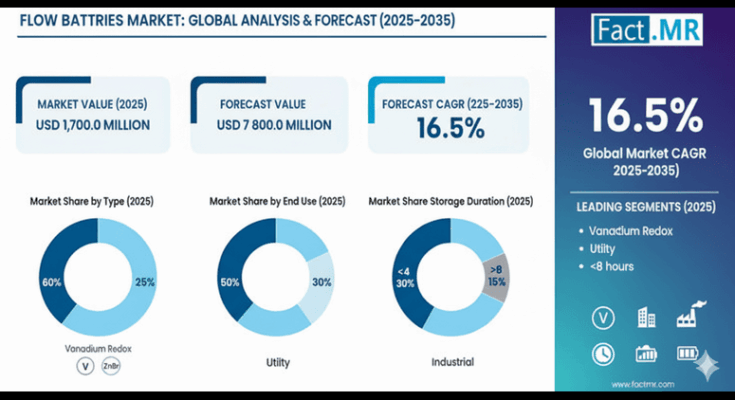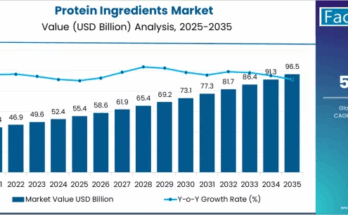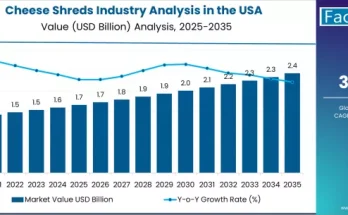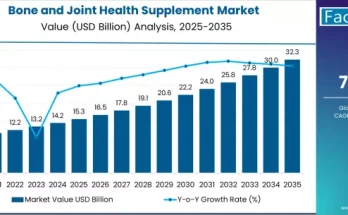The global Food Grade Biofilms Market is poised for robust expansion, projected to grow from USD 1,050.0 million in 2025 to USD 1,850.0 million by 2035, recording an absolute increase of USD 800.0 million over the decade. This marks a total growth of 76.2%, translating to a compound annual growth rate (CAGR) of 5.9% during the forecast period. The market is expected to expand nearly 1.8 times between 2025 and 2035, driven by heightened global demand for advanced food preservation technologies, biodegradable packaging solutions, and enhanced food safety systems across the food processing and packaging sectors.
Industry Expansion Driven by Next-Generation Food Preservation Technologies
The forecast underscores a fundamental transformation in how global food manufacturers approach preservation, packaging, and safety assurance. Between 2025 and 2030, the market will advance from USD 1,050.0 million to USD 1,400.0 million, adding USD 350.0 million in value — representing 43.8% of the total growth anticipated for the decade. This early growth phase will be anchored by accelerating adoption of biodegradable biofilm coatings, increased applications in food-grade packaging, and the integration of bio-based barrier systems to reduce spoilage rates and extend product shelf life.
From 2030 to 2035, the sector is projected to gain another USD 450.0 million, accounting for 56.3% of the decade’s total expansion. This phase will be marked by technical advancements in customized preservation systems, precision-engineered biofilm formulations, and regulatory alignment with global food safety standards. As food manufacturers shift toward next-generation processing protocols, biofilm solutions are emerging as essential infrastructure components—enabling safe, sustainable, and high-efficiency food operations.
Key Market Insights and Quick Stats
| Metric | Value |
|---|---|
| Market Value (2025) | USD 1,050.0 million |
| Forecast Value (2035) | USD 1,850.0 million |
| Forecast CAGR (2025–2035) | 5.9% |
| Leading Material (2025) | Polysaccharides (40.0%) |
| Dominant Application | Edible Coatings (45.0%) |
| Key Regions | Asia Pacific, North America, Europe |
| Top Companies | DSM, Danimer Scientific, BASF, Novamont, Evonik, Kuraray, Tate & Lyle, Ingredion |
Strategic Drivers of Growth
1. Food Safety and Quality Assurance
As regulatory frameworks tighten across Europe, North America, and Asia Pacific, manufacturers are prioritizing technologies that provide measurable improvements in food safety and shelf-life control. Biofilms engineered from polysaccharides, proteins, and lipids provide superior barrier protection, minimizing microbial contamination and oxidative spoilage.
2. Sustainability and Biodegradability
The industry’s pivot toward eco-friendly preservation materials is reshaping competitive strategies. Biofilms’ biodegradable and plant-based formulations align with global sustainability mandates, enabling companies to meet circular economy goals while reducing packaging waste.
3. Technological Integration
The integration of digital quality management, automated monitoring systems, and data-driven preservation analytics enhances traceability and process optimization. Manufacturers leveraging digital platforms to manage biofilm performance, supply consistency, and compliance documentation are gaining competitive advantages in regulated food markets.
Pathways to Market Opportunity
The Food Grade Biofilms Market offers multiple entry points for manufacturers and suppliers seeking to capture value across material innovations, regional expansions, and technological differentiation.
- Polysaccharide Dominance (40.0% share): Offers optimal performance-cost balance for large-scale food preservation. Estimated revenue pool: USD 420–740 million.
- Edible Coatings Leadership (45.0% share): Represents the largest functional application segment, driven by versatility and regulatory approval advantages. Market opportunity: USD 472–832 million.
- Asian Market Acceleration: With India (6.8% CAGR) and China (6.5% CAGR) leading growth, localized production partnerships and regulatory expertise are critical to capture USD 180–400 million in new opportunities.
- Plant-Based Premium Segment: High-performance, eco-friendly formulations designed for specialty food operations are forecast to generate USD 735–1,295 million in potential revenue.
- Advanced Technology Integration: Companies investing in automated manufacturing, precision coating, and smart barrier monitoring can access USD 120–280 million in technology premiums.
Regional Growth Analysis
Asia Pacific: Global Growth Engine
Asia Pacific will remain the fastest-growing regional market, fueled by the expansion of food processing infrastructure and heightened focus on safety and sustainability.
- India leads at 6.8% CAGR, supported by food modernization initiatives and rapid adoption of advanced preservation systems.
- China follows closely at 6.5% CAGR, with industrial-scale biofilm deployment in major food hubs such as Beijing, Shanghai, and Guangzhou.
North America: Innovation and Regulatory Excellence
The U.S. market (5.8% CAGR) remains at the forefront of technology-driven food safety innovation, leveraging advanced packaging systems and AI-driven quality validation. Manufacturers prioritize compliance with FDA and USDA standards, integrating biofilm coatings into national food processing networks.
Europe: Precision and Quality Leadership
Europe, led by Germany (5.2% CAGR) and France (5.1% CAGR), emphasizes precision-engineered barrier systems and integration with smart food platforms. EU directives promoting sustainability and safety create strong incentives for biofilm adoption across regional markets.
Competitive Landscape: Leadership Through Innovation
The competitive structure of the Food Grade Biofilms Market reflects growing alignment between chemical innovators, food processors, and sustainability-driven suppliers.
- DSM leads with a 12.0% market share, offering advanced high-efficiency biofilm solutions focused on reliability and performance stability.
- Danimer Scientific and Novamont emphasize biodegradable system innovation, leveraging proprietary material science.
- BASF, Evonik, and Kuraray invest in customized food applications and cross-sector R&D collaborations, while Tate & Lyle and Ingredion deliver application-specific preservation systems integrating seamlessly into existing processing infrastructures.
This ecosystem of global leaders underscores a shared commitment to precision preservation, material innovation, and sustainability-driven competitiveness.
Browse Full Report : https://www.factmr.com/report/food-grade-biofilms-market
Future Outlook: Redefining Food Preservation Efficiency
By 2035, food grade biofilms are expected to become standardized components of food processing ecosystems, driving measurable improvements in safety, shelf life, and environmental performance. The convergence of plant-based materials, digital integration, and performance optimization will transform biofilms from niche packaging aids into essential industrial technologies enabling sustainable growth across the food ecosystem.
With global investments rising in food technology R&D, and with consumer and regulatory focus converging on quality, sustainability, and safety, the Food Grade Biofilms Market presents one of the most dynamic, high-value opportunities for manufacturers, chemical producers, and food innovators entering the next decade of industrial food advancement.



